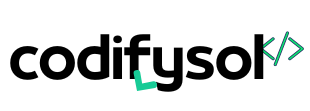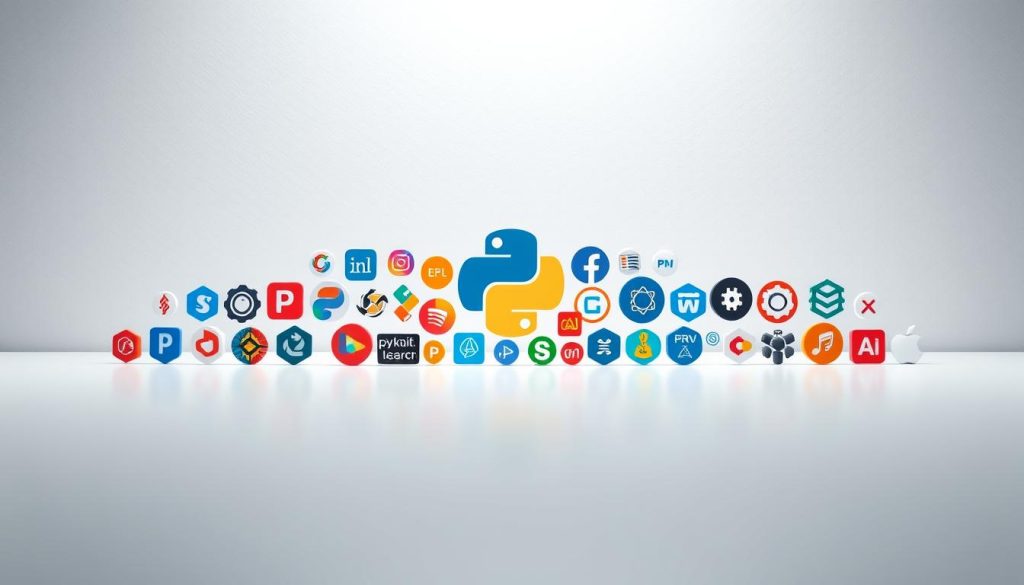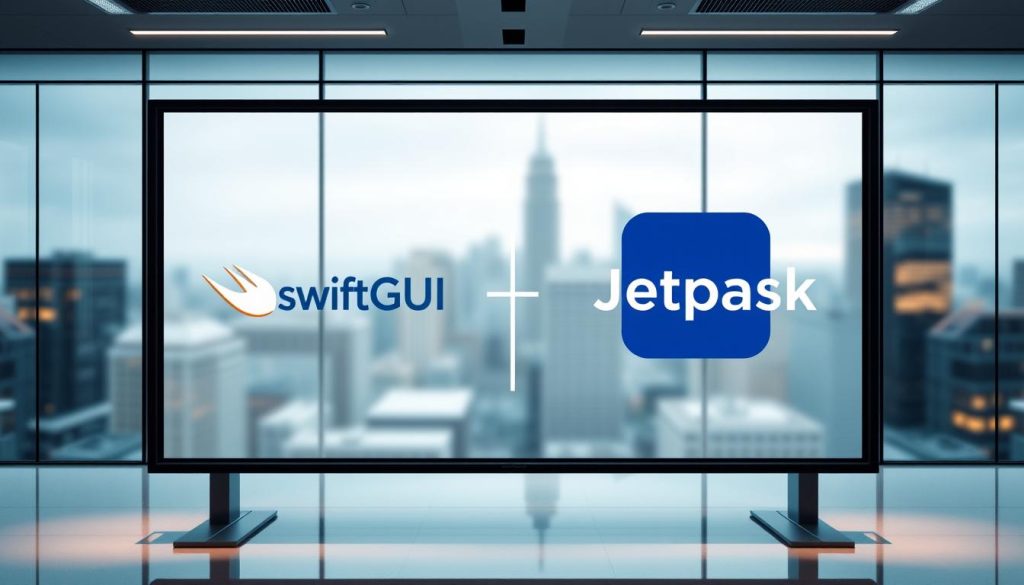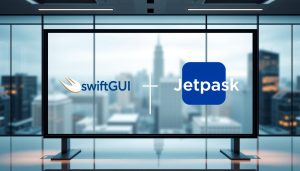Top Python Libraries for AI and Machine Learning in 2025
The world of Artificial Intelligence (AI) and Machine Learning (ML) is rapidly evolving, and Python has emerged as a leading programming language in this domain.
With its simplicity and extensive libraries, Python has become the go-to choice for developers and researchers alike. The versatility of Python in handling complex AI and ML tasks has made it an indispensable tool in the tech industry.

As we step into 2025, the landscape of AI and ML continues to expand, with new libraries and frameworks being developed to tackle the increasingly complex demands of these technologies.
Key Takeaways
- Python’s simplicity and extensive libraries make it ideal for AI and ML development.
- The demand for efficient AI and ML libraries is on the rise.
- Several key libraries are expected to dominate the landscape in 2025.
- Developers and researchers are leveraging these libraries for innovative projects.
- The future of AI and ML development looks promising with Python at the forefront.
The State of AI and Machine Learning in 2025
As we step into 2025, the landscape of AI and Machine Learning continues to evolve at an unprecedented pace. The field is witnessing significant advancements in various areas, from data processing to deep learning frameworks.
The current state of AI is characterized by its increasing integration into diverse industries, including healthcare, finance, and transportation. Machine Learning advancements are enabling more accurate predictions and decision-making processes.
Key Technological Shifts in the AI Landscape
Several key technological shifts are shaping the AI landscape in 2025. These include:
- The rise of edge AI, where AI processing occurs closer to the data source, reducing latency and improving real-time decision-making.
- Advances in natural language processing (NLP), enabling more sophisticated human-computer interactions.
- The growing importance of explainable AI (XAI), as transparency and accountability become critical in AI-driven applications.
Why Python Remains the Dominant Language for AI Development
Despite the emergence of new programming languages, Python remains the dominant language for AI development in 2025. Its popularity can be attributed to its simplicity, flexibility, and the extensive libraries available for AI and Machine Learning tasks.
Some of the key reasons Python continues to thrive in AI include:
- Extensive libraries: Python’s ecosystem is rich with libraries such as TensorFlow, PyTorch, and scikit-learn, which simplify the development of AI models.
- Community support: The Python community is vast and active, providing numerous resources and support for AI developers.
- Cross-industry adoption: Python is widely used across various industries, making it a versatile choice for AI development.
The Landscape of Top Python Libraries for AI and Machine Learning in 2025
In 2025, the importance of selecting the right Python libraries for AI and Machine Learning cannot be overstated. As the field continues to evolve, developers and researchers must navigate a complex landscape of tools and frameworks to build effective AI solutions.
The selection of an appropriate library can significantly impact the performance, scalability, and maintainability of AI projects. With numerous options available, understanding the evaluation criteria for modern AI libraries is crucial.
Evaluation Criteria for Modern AI Libraries
When assessing AI libraries, several key factors come into play. These include:
- Performance: How efficiently does the library process data and execute models?
- Ease of Use: How intuitive is the library’s API, and how easily can developers integrate it into their workflows?
- Community Support: How active is the library’s community, and what resources are available for troubleshooting and optimization?
- Scalability: How well does the library handle large datasets and complex models?
| Library | Performance | Ease of Use | Community Support |
|---|---|---|---|
| TensorFlow | High | Medium | Excellent |
| PyTorch | High | High | Excellent |
| Scikit-Learn | Medium | High | Good |
Open Source vs. Commercial Library Ecosystems
The debate between open-source and commercial library ecosystems is ongoing. Open-source libraries like TensorFlow and PyTorch offer flexibility, community-driven development, and cost-effectiveness. In contrast, commercial libraries may provide dedicated support, enhanced security, and streamlined integration with other proprietary tools.
When choosing between open-source and commercial libraries, developers must consider their project’s specific needs, weighing factors such as customization requirements, budget constraints, and the importance of vendor support.
Foundation Libraries for Data Processing
Efficient data processing is crucial for AI and ML, and Python’s ecosystem provides a robust foundation through its various libraries. At the heart of this ecosystem are libraries that enable efficient data manipulation, analysis, and processing.
These foundational libraries have evolved to meet the growing demands of AI and ML applications, offering enhanced performance, scalability, and functionality. They form the backbone of most data-intensive applications, from data cleaning and preprocessing to complex data analysis and visualization.
NumPy and Pandas: Enhanced Capabilities for 2025
NumPy and Pandas remain two of the most critical libraries for data processing in Python. NumPy’s enhanced capabilities include improved support for large, multi-dimensional arrays and matrices, along with a large collection of high-level mathematical functions to operate on these arrays. Pandas, on the other hand, offers data structures and functions designed to efficiently handle structured data, including tabular data such as spreadsheets and SQL tables.
In 2025, both libraries continue to evolve, with improvements in performance, especially for larger datasets, and new functionalities that simplify complex data operations. For instance, Pandas has seen significant enhancements in its ability to handle missing data and perform data merging and joining operations more efficiently.
Polars, Dask, and Other Next-Generation Data Tools
Beyond NumPy and Pandas, newer libraries have emerged to address specific needs in data processing. Polars is a fast, parallelized DataFrame library that provides an alternative to Pandas, with a focus on performance and scalability. Dask is another powerful library that scales Pandas and NumPy computations to larger-than-memory data, enabling users to work with big data using familiar APIs.
These next-generation data tools are designed to tackle the challenges of modern data processing, including handling large datasets, parallelizing computations, and integrating with other tools in the data science ecosystem. As AI and ML continue to evolve, the role of these libraries in enabling efficient data processing will only become more critical.
Deep Learning Frameworks Revolutionizing AI
Deep learning frameworks are at the forefront of AI innovation, driving significant advancements in the field. These frameworks have become the backbone of AI research and development, enabling the creation of complex models that can learn from vast amounts of data.
TensorFlow and PyTorch: New Features and Optimizations
TensorFlow and PyTorch are two of the most popular deep learning frameworks currently in use. TensorFlow, developed by Google, is known for its scalability and extensive community support. PyTorch, developed by Facebook, is praised for its ease of use and rapid prototyping capabilities. Both frameworks have seen significant updates in recent years, with new features and optimizations that have further enhanced their capabilities.
Hardware Acceleration Advancements
One of the key areas of advancement in both TensorFlow and PyTorch is hardware acceleration. The integration of GPU acceleration and TPU support has significantly improved the performance of deep learning models. This allows researchers and developers to train larger, more complex models in less time.
Model Serving and Deployment Tools
Both frameworks have also seen improvements in model serving and deployment tools. TensorFlow’s TensorFlow Serving and PyTorch’s TorchServe provide robust solutions for deploying models in production environments. These tools simplify the process of managing model versions, handling requests, and monitoring performance.
JAX, MXNet, and Emerging Frameworks
While TensorFlow and PyTorch dominate the landscape, other frameworks like JAX and MXNet are gaining traction. JAX, developed by Google, is known for its high-level API for numerical computing and is particularly well-suited for high-performance machine learning research. MXNet, supported by Apache, offers a flexible and efficient platform for deep learning.
The table below compares some of the key features of these deep learning frameworks:
| Framework | Primary Use | Key Features |
|---|---|---|
| TensorFlow | Large-scale production environments | Scalability, extensive community support |
| PyTorch | Research and rapid prototyping | Ease of use, dynamic computation graph |
| JAX | High-performance research | High-level API, composable function transformations |
| MXNet | Flexible deep learning | Efficiency, flexibility in model definition |
Natural Language Processing Powerhouses
The landscape of Natural Language Processing (NLP) is rapidly evolving, with several powerful libraries emerging as leaders in 2025. These NLP powerhouses are revolutionizing how machines understand and generate human language, enabling more sophisticated applications across various industries.
Hugging Face Transformers and SpaCy Advancements
Hugging Face Transformers has become a cornerstone in NLP, providing thousands of pre-trained models for tasks like text classification, sentiment analysis, and language translation. Its popularity stems from its ease of use and the extensive community support. “The Transformers library has democratized access to state-of-the-art NLP models, making it a go-to resource for developers and researchers alike.”
SpaCy, on the other hand, is renowned for its industrial-strength natural language understanding capabilities. It offers high-performance, streamlined processing of text data, including tokenization, entity recognition, and language modeling. The recent advancements in SpaCy have further enhanced its capabilities, making it a preferred choice for many NLP tasks.
Large Language Model Integration Tools
The integration of large language models (LLMs) has been a significant development in NLP. Libraries like Hugging Face Transformers provide seamless integration with LLMs, enabling developers to leverage these powerful models for complex tasks. This integration has opened up new possibilities for applications such as chatbots, content generation, and more.
Multilingual Processing Capabilities
Multilingual processing is another area where NLP libraries have made significant strides. Both Hugging Face Transformers and SpaCy offer robust multilingual support, allowing developers to build applications that can understand and process multiple languages. This capability is crucial for global businesses and applications that need to cater to diverse linguistic populations.
Specialized NLP Libraries for Domain-Specific Applications
Beyond the general-purpose NLP libraries, there are specialized libraries designed for domain-specific applications. For instance, libraries focused on biomedical text analysis or financial text processing are becoming increasingly important. These libraries are tailored to handle the unique challenges and terminologies of their respective domains, providing more accurate and relevant results.
As NLP continues to evolve, we can expect to see even more specialized and powerful libraries emerge, further enhancing the capabilities of AI systems to understand and interact with human language.
Computer Vision and Multimedia Processing Libraries
In the landscape of AI, computer vision libraries are playing a pivotal role, with OpenCV, Detectron2, and YOLO leading the charge. These libraries have become indispensable in developing applications that require image and video analysis, object detection, and more.

OpenCV, Detectron2, and YOLO Frameworks in 2025
OpenCV remains a cornerstone in the computer vision community, offering a wide range of functionalities from basic image processing to advanced computer vision tasks. Detectron2, built on top of PyTorch, has revolutionized object detection and segmentation tasks with its high performance and flexibility. YOLO (You Only Look Once) frameworks continue to be popular for real-time object detection due to their speed and accuracy.
Key Features and Advancements:
- OpenCV: Enhanced DNN module, improved video analysis capabilities.
- Detectron2: Better support for custom datasets, improved performance on complex scenes.
- YOLO: Faster and more accurate models, better suited for edge devices.
| Library | Primary Use | Notable Features |
|---|---|---|
| OpenCV | General Computer Vision Tasks | DNN module, Image Processing |
| Detectron2 | Object Detection, Segmentation | High Performance, Flexibility |
| YOLO | Real-time Object Detection | Speed, Accuracy |
Multimodal Learning Libraries Bridging Vision and Language
Multimodal learning is an emerging area that combines vision and language to enable more sophisticated AI applications. Libraries that facilitate multimodal learning are becoming increasingly important.
“The future of AI lies in its ability to understand and interact with the world in a multimodal way, combining vision, language, and other modalities.”
— Dr. Andrew Ng, AI Pioneer
These libraries enable applications such as image captioning, visual question answering, and more, by providing the necessary tools to process and integrate information from different modalities.
Key Libraries and Their Applications:
- CLIP (Contrastive Language-Image Pre-training) for understanding the relationship between images and text.
- Visual Transformers for applying transformer architectures to vision tasks.
AutoML and Hyperparameter Optimization Tools
The future of AI development is being shaped by AutoML and hyperparameter optimization. These technologies are revolutionizing the field by making it more accessible and efficient for developers to build and deploy AI models.
AutoML, or Automated Machine Learning, refers to the use of software to automate the process of applying machine learning to real-world problems. This includes automating the selection of the best model, hyperparameters, and other components of the machine learning pipeline.
Auto-Sklearn, TPOT, and Automated Pipeline Libraries
Auto-Sklearn and TPOT are two prominent libraries that have gained popularity for their ability to automate the machine learning pipeline. Auto-Sklearn is built on top of Scikit-learn and provides an easy-to-use interface for automating the selection of machine learning algorithms and hyperparameters.
TPOT, on the other hand, uses a genetic programming approach to optimize the machine learning pipeline. Both libraries simplify the process of building machine learning models, making it easier for developers to focus on other aspects of their projects.
| Library | Key Features | Use Cases |
|---|---|---|
| Auto-Sklearn | Automated algorithm selection, hyperparameter tuning | Classification, regression tasks |
| TPOT | Genetic programming-based pipeline optimization | Complex machine learning pipelines, feature engineering |
Neural Architecture Search and Model Compression Tools
Neural Architecture Search (NAS) is another area where significant advancements are being made. NAS involves using machine learning to automate the design of neural network architectures, which can lead to more efficient and effective models.
Model compression tools are also crucial for deploying AI models on edge devices or in environments where computational resources are limited. Techniques such as pruning, quantization, and knowledge distillation are being used to reduce the size and computational requirements of AI models.
By leveraging these tools and technologies, developers can create more efficient, scalable, and accessible AI solutions. As the field continues to evolve, we can expect to see even more innovative applications of AutoML and hyperparameter optimization.
Specialized Libraries for Emerging AI Applications
As AI continues to evolve, specialized libraries are emerging to tackle complex applications. These libraries are designed to address specific challenges in areas such as reinforcement learning, explainable AI, and federated learning.
Reinforcement Learning with Stable Baselines3 and RLlib
Reinforcement learning has seen significant advancements with libraries like Stable Baselines3 and RLlib. These libraries provide efficient implementations of state-of-the-art reinforcement learning algorithms, making it easier for developers to apply these techniques to real-world problems. Stable Baselines3 offers a simple, unified interface for a wide range of algorithms, while RLlib provides scalability and flexibility, supporting both single-agent and multi-agent environments.

Explainable AI Tools: SHAP, LIME, and Beyond
As AI models become increasingly complex, understanding their decisions is crucial. Libraries like SHAP (SHapley Additive exPlanations) and LIME (Local Interpretable Model-agnostic Explanations) are leading the way in explainable AI. These tools provide insights into how models make predictions, helping to build trust and transparency in AI systems. SHAP assigns a value to each feature for a specific prediction, while LIME generates an interpretable model locally to approximate the predictions of the original model.
Federated Learning and Privacy-Preserving AI Libraries
The rise of federated learning and privacy-preserving AI is driven by the need to protect sensitive data. Libraries focused on these areas enable the development of AI models that can be trained on decentralized data, ensuring privacy and security. Techniques such as differential privacy and secure multi-party computation are being integrated into these libraries, paving the way for AI applications that respect user privacy while still leveraging the power of large datasets.
Conclusion: Building Your AI Toolkit for the Future
As we navigate the rapidly evolving landscape of AI and machine learning, building a comprehensive AI toolkit is crucial for success. The Python libraries discussed in this article form the foundation of a robust toolkit, enabling developers to tackle a wide range of AI applications, from data processing and deep learning to natural language processing and computer vision.
By leveraging these Python libraries for AI, developers can accelerate their projects and stay ahead of the curve. The future of AI is closely tied to the advancement of these libraries, with ongoing developments in areas like AutoML, explainable AI, and federated learning.
To future-proof your AI projects, it’s essential to stay updated with the latest developments in the AI community and continually expand your AI toolkit. By doing so, you’ll be well-equipped to harness the full potential of AI and drive innovation in your field.
FAQ
What are the most important Python libraries for AI and Machine Learning in 2025?
The most important Python libraries for AI and Machine Learning in 2025 include NumPy, Pandas, TensorFlow, PyTorch, Hugging Face Transformers, OpenCV, and Scikit-learn, among others.
How do I choose the right deep learning framework for my project?
Choosing the right deep learning framework depends on your project’s specific needs, such as the type of models you want to build, the hardware you are using, and your team’s expertise. TensorFlow and PyTorch are popular choices, while JAX and MXNet are emerging frameworks worth considering.
What is the difference between open-source and commercial AI libraries?
Open-source AI libraries are freely available, customizable, and often community-driven, whereas commercial libraries are developed and maintained by companies, offering support, proprietary features, and sometimes more polished user experiences.
How do AutoML and hyperparameter optimization tools simplify AI development?
AutoML and hyperparameter optimization tools, such as Auto-Sklearn and TPOT, simplify AI development by automating the process of selecting the best models, hyperparameters, and pipelines, saving time and improving model performance.
What are some key libraries for Natural Language Processing (NLP) tasks?
Key libraries for NLP tasks include Hugging Face Transformers, SpaCy, and NLTK, which provide tools for tasks such as text processing, sentiment analysis, and language modeling.
How are libraries like OpenCV and Detectron2 used in computer vision applications?
Libraries like OpenCV and Detectron2 are used in computer vision applications for tasks such as object detection, image segmentation, and image processing, enabling applications like self-driving cars, surveillance systems, and medical imaging analysis.
What is the role of explainable AI tools like SHAP and LIME?
Explainable AI tools like SHAP and LIME help interpret and understand the decisions made by AI models, providing insights into how models work and why they make certain predictions, which is crucial for building trustworthy AI systems.
How do federated learning and privacy-preserving AI libraries work?
Federated learning and privacy-preserving AI libraries enable the training of AI models on decentralized data, ensuring that sensitive information remains on local devices and is not shared, thus preserving privacy while still allowing for the benefits of collaborative model training.
What are some emerging trends in AI and Machine Learning that I should be aware of?
Emerging trends in AI and Machine Learning include the increasing use of multimodal learning, reinforcement learning, and federated learning, as well as advancements in explainable AI, AutoML, and the integration of AI with other technologies like edge computing and the Internet of Things (IoT).








